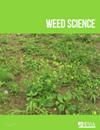利用SSR标记获取泰国东北部杂草稻的遗传多样性和群体结构
IF 2.1
2区 农林科学
Q2 AGRONOMY
引用次数: 0
摘要
泰国东北(NE)地区是优质栽培水稻(Oryza sativa L.)生产的地区。然而,杂草水稻的爆发最近已蔓延到整个地区。杂草稻在表型和形态上与栽培稻相似,使鉴定困难。对该地区杂草稻的遗传多样性和种群结构的研究是今后杂草稻管理的重要内容。本研究利用SSR (simple sequence repeat)标记对泰国东北部380份杂草稻样品的遗传多样性和群体结构进行了分析。31个SSR标记共产生213个等位基因,平均每个位点6.87个,总体基因多样性为0.723。根据其地理来源,东北偏南杂草稻的基因多样性高于东北偏中和东北偏北地区。各地区异交率均较高,东北南部最高,达9.769%。遗传距离分析表明,泰国东北部杂草稻样品的聚类与地理区域无关。邻接分析和主坐标分析表明,380个杂草稻样本可分为两大聚类。集群1包含3个杂草稻样本和4个野生稻样本。在聚类II中,377个杂草水稻样品与4个栽培水稻品种以及野生褐须稻品种亲缘关系密切。结果表明,泰国东北部的杂草稻可能起源于栽培稻和野生稻的杂交,就像在密切相关的物种O. rufipogon中看到的那样。总体而言,本研究结果表明该地区杂草稻具有较高的遗传多样性。值得注意的是,一些样品适应了,表现得更像栽培水稻,这可能会对该地区未来生产优质水稻造成问题。因此,在今后的研究中,对杂草水稻的防治应给予更多的考虑。本文章由计算机程序翻译,如有差异,请以英文原文为准。
The genetic diversity and population structure of weedy rice in Northeast Thailand accessed by SSR markers
Abstract Thailand’s northeast (NE) region is an area of high-quality cultivated rice ( Oryza sativa L.) production. However, an outbreak of weedy rice has recently spread throughout the region. Weedy rice is phenotypically and morphologically similar to cultivated rice, making identification difficult. The prospective management of weedy rice in the future will involve the study of its genetic diversity and population structure in this region. This study assesses the genetic diversity and population structure of 380 weedy rice samples in the northeast of Thailand through simple sequence repeat (SSR) markers. Thirty-one SSR markers generated 213 alleles with an average of 6.87 per locus and an overall gene diversity of 0.723. Based on its geographical origin, weedy rice in the Southern NE showed greater gene diversity than that in the Central NE and Northern NE areas. The out-crossing rate in all regions was relatively high, with the highest being in the Southern NE at 9.769%. According to genetic distance analysis, the clustering of weedy rice samples in Northeast Thailand was not associated with the geographical region. Neighbor-joining and principal coordinate analysis revealed that the 380 weedy rice samples fell into two major clusters. Cluster I contained three weedy rice samples and four wild. In Cluster II, 377 weedy rice samples were closely related to the four cultivated rice cultivars as well as brownbeard rice ( Oryza rufipogon Griffiths) wild species. The results suggest that weedy rice in Northeast Thailand may have originated as a cross between cultivated and wild rice, as seen in the closely related species, O. rufipogon . Overall, the findings of this study demonstrate the high genetic diversity of weedy rice in this region. Notably, some samples adapted, performing more like cultivated rice, which may be problematic for the future production of high-quality rice in this region. The prevention of weedy rice should, therefore, be given greater consideration in future studies.
求助全文
通过发布文献求助,成功后即可免费获取论文全文。
去求助
来源期刊

Weed Science
农林科学-农艺学
CiteScore
4.60
自引率
12.00%
发文量
64
审稿时长
12-24 weeks
期刊介绍:
Weed Science publishes original research and scholarship in the form of peer-reviewed articles focused on fundamental research directly related to all aspects of weed science in agricultural systems. Topics for Weed Science include:
- the biology and ecology of weeds in agricultural, forestry, aquatic, turf, recreational, rights-of-way and other settings, genetics of weeds
- herbicide resistance, chemistry, biochemistry, physiology and molecular action of herbicides and plant growth regulators used to manage undesirable vegetation
- ecology of cropping and other agricultural systems as they relate to weed management
- biological and ecological aspects of weed control tools including biological agents, and herbicide resistant crops
- effect of weed management on soil, air and water.
 求助内容:
求助内容: 应助结果提醒方式:
应助结果提醒方式:


